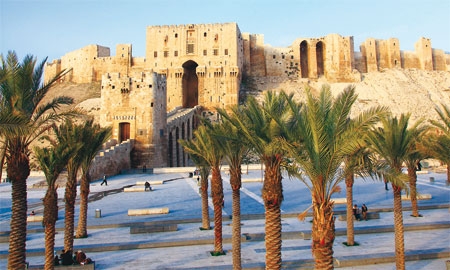Both outstanding examples of fortification architecture during the time of the Crusades (11th to 13th centuries), Crac des Chevaliers is considered one of the world’s best-preserved medieval military castles. The Qal’at Salah El-Din affords visitors a sampling of Byzantine, Frankish, and Ayyubid architectural styles.
Although much of Europe, northern Africa and the Near East are riddled with Roman ruins, few of these are as significant as the ruins of the great city of Palmyra. What was once one of the most important cultural centers of the ancient world, Palmyra sat at the crossroads of several civilizations and was a first and second century meeting point for knowledge and culture from the East and the West.
Dozens of millennia of habitation in this region has left Syria with mesmerizing old cities. Losing oneself in Damascus’ nearly incomprehensible antiquity, meandering through the isolated columns of a magnificent Roman theater in Bosra, or strolling amidst the hubbub of Aleppo’s streets lined with a 13th century citadel, a 12th century mosque, and various 17th century madrasas, palaces, caravanserais, and hammams, one can feel transported back to a time so foreign and exotic to our own. UNESCO recognized the historical and cultural importance of the totality of these three cities – their parks, their souks, their fortresses, and religious monuments.
Six UNESCO sites in a country roughly the size of Washington State is quite impressive. However, it doesn’t end there: Syria is about to register the largest archeological park in the world, with more than 700 different sites all in the same area around Ebla, located between Aleppo and Idlib.

0 COMMENTS